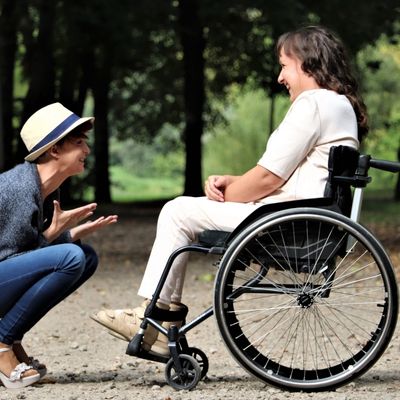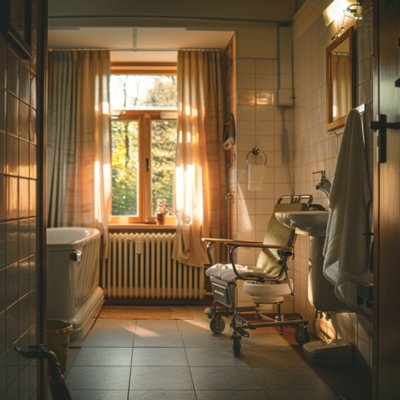When it comes to home care, understanding hospital bed specifications is crucial for ensuring comfort, safety, and proper care. This comprehensive guide will walk you through the key aspects of hospital bed specs, helping you make informed decisions for your loved ones or patients. Let's dive into the world of hospital beds and explore what makes them tick!
Standard Hospital Bed Dimensions and Size Options
Hospital beds come in various sizes to accommodate different needs. The standard hospital bed dimensions are:
- Width: 36 inches (91 cm)
- Length: 80 inches (203 cm)
However, there are several size options available to suit individual requirements:
- Twin: 38 inches wide
- Full: 54 inches wide
- Queen: 60 inches wide
- King: 76 inches wide
- Extra-long: 84 or 88 inches long
- Extra-wide: Up to 48 inches wide
Choosing the right size is essential for patient comfort and caregiver accessibility. For those requiring extra space, bariatric hospital beds offer wider options designed for larger individuals.
Weight Capacities: Finding the Right Support
Hospital beds are designed to support various weight capacities:
- Standard: 350-450 pounds
- Heavy-duty bariatric: 600-750 pounds
- Super heavy-duty bariatric: Up to 1000 pounds
It's important to choose a bed with a weight capacity that exceeds the user's weight by at least 100 pounds. This ensures the bed can handle the additional weight of bedding, medical equipment, and occasional pressure from caregivers leaning on the bed.
Key Points
- Standard Weight Capacity: 350-450 pounds (159-204 kg)
- Bariatric Weight Capacity: 600-750 pounds (272-340 kg)
- Super Bariatric Weight Capacity: Up to 1000 pounds (454 kg)
- Choose a bed with a weight capacity that exceeds the user's weight by at least 100 pounds
Adjustable Features for Comfort and Functionality
Modern hospital beds come with a range of adjustable features to enhance comfort and facilitate care:
- Hi-Low adjustment: Typically ranging from 7-30 inches in height
- Head and foot articulation for various positioning options
- Expandable width: Some models can expand from 36 to 48 inches
These features are designed to improve patient comfort and make caregiving tasks easier. Adjustable hospital beds offer the flexibility to cater to changing needs over time.
The Med-Mizer Hi-Lo AllCare Low Hospital Bed Set and the Med-Mizer Retract-F Fully Electric Hospital Bed RetractaBed are excellent examples of beds with advanced adjustable features. These beds offer full electric controls, adjustable height, and positioning options to cater to various care needs.
Safety Guidelines and Clearance Requirements
To ensure safe use of hospital beds at home, consider the following guidelines:
- Maintain at least 3 feet of clearance on each side of the bed
- Use compatible mattresses and accessories designed for hospital beds
- Implement fall prevention features such as side rails when necessary
Safety should always be a top priority when setting up a hospital bed at home. Hi-low hospital beds offer additional safety benefits by allowing easy height adjustments for transfers and care.
Clearance Requirements for Hospital Beds
Special Considerations and Additional Features
Hospital beds can be customized to meet specific needs:
- Pediatric beds with narrower widths and lower height ranges
- Foot extenders for taller users
- Expandable lengths up to 88 inches
- Mobility features like wheels and locking mechanisms
For long-term care needs, long-term hospital beds offer durability and advanced features designed for extended use.
The Med-Mizer AllCare Low Hospital Bed and the MedaCure Ultra Low Hi-Low Hospital Bed showcase advanced features like expandable width options, floor-level height capabilities, and high weight capacities, making them suitable for a wide range of users.
Understanding Technical Specifications
When reviewing hospital bed specifications, you'll encounter various technical terms. Here's a breakdown of some key specs and what they mean for users:
- Hi-Lo Setting: This refers to the height range of the bed. For example, a range of 9"-25" means the bed can be lowered to 9 inches from the floor and raised to 25 inches.
- Weight Capacity: This indicates the maximum weight the bed is designed to support safely. For instance, a 500 lb capacity means the bed is designed for users up to 500 pounds.
- Expandable Width: Some beds can be adjusted in width. A bed that expands from 35" to 42" can accommodate users of different sizes or those who prefer more space.
These specifications are designed to enhance user comfort and safety, but it's important to note that proper sizing and selection should be determined with input from healthcare professionals.
Height Range
9"-25" adjustable height
Weight Capacity
250-500 lbs
Expandable Width
35"-42" adjustable width
Choosing the Right Hospital Bed
Selecting the appropriate hospital bed involves considering various factors:
- User's physical dimensions and weight
- Specific medical needs and conditions
- Caregiver requirements and ease of use
- Room size and layout
- Long-term vs. short-term use
For a wide selection of options, explore our hospital beds collection. From basic models to advanced features, you'll find beds suitable for various care scenarios.
Conclusion: Empowering Your Home Care Journey
Understanding hospital bed specifications is crucial for creating a comfortable and safe home care environment. By considering factors like bed dimensions, weight capacity, adjustable features, and safety guidelines, you can make an informed decision that best suits your needs.
Remember, while these specifications are designed to enhance comfort and safety, they don't directly influence medical













